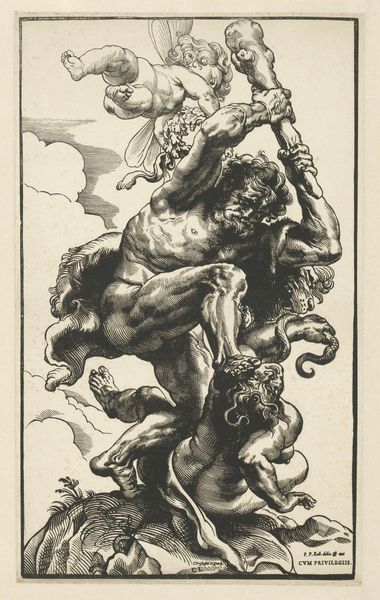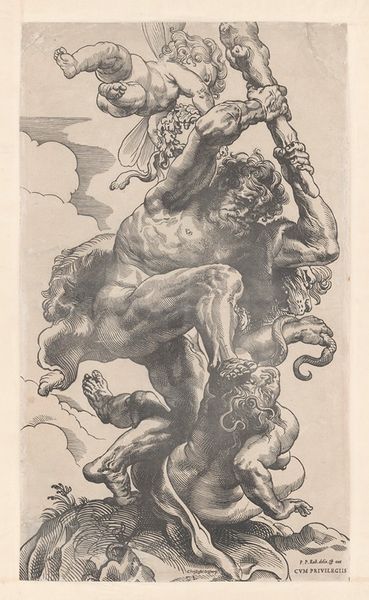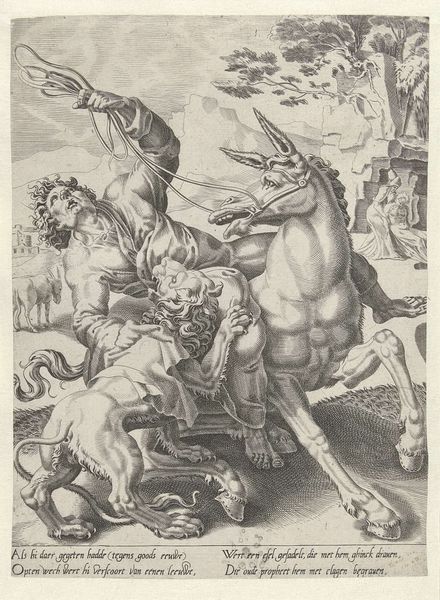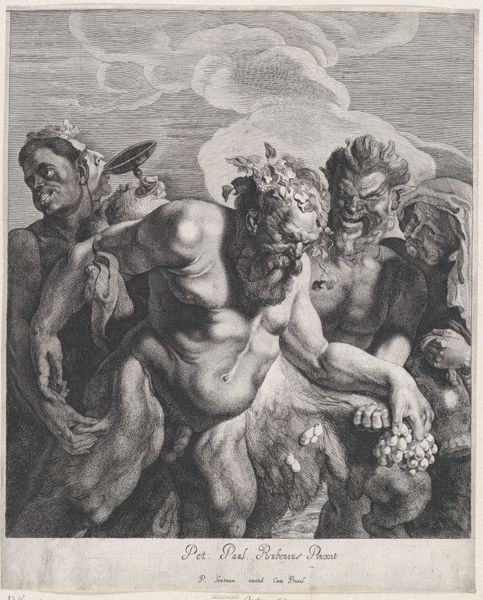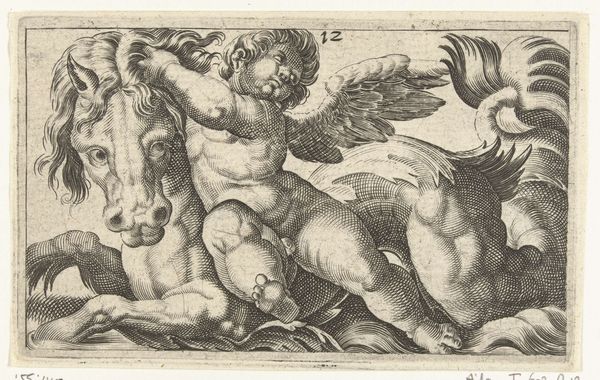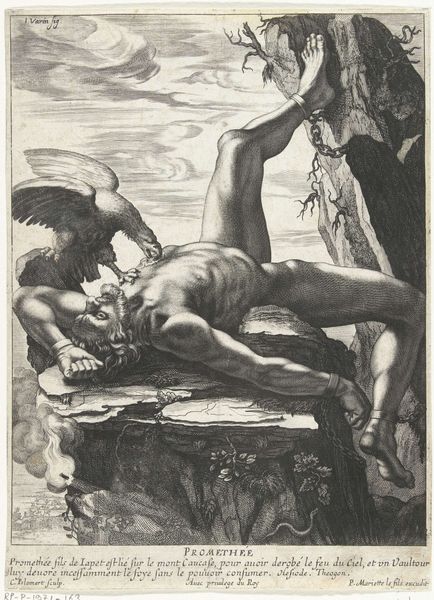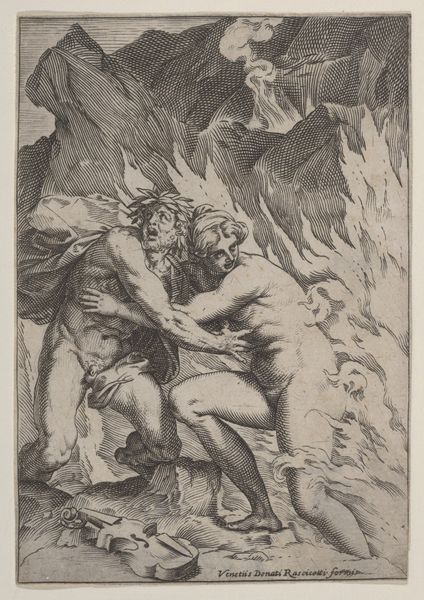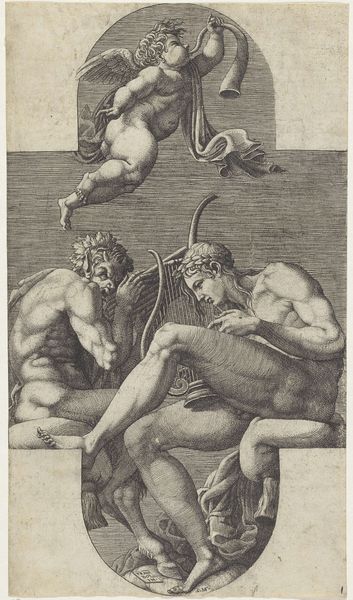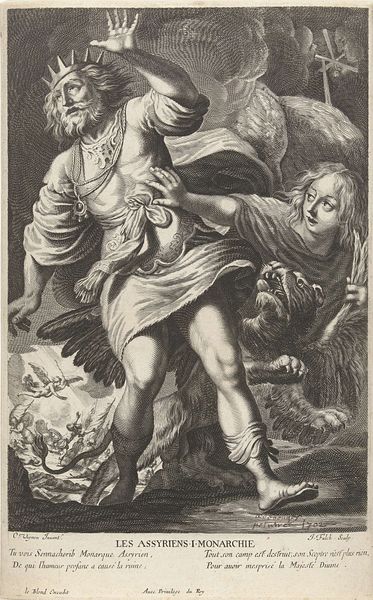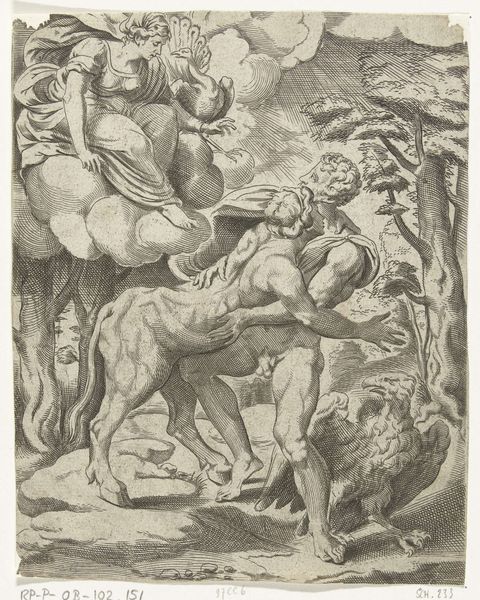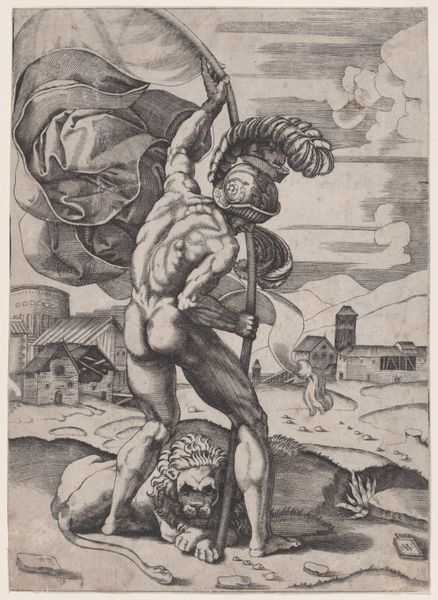
drawing, print, paper, engraving
#
drawing
#
allegory
#
baroque
# print
#
charcoal drawing
#
figuration
#
paper
#
history-painting
#
engraving
Dimensions: 602 × 362 mm (image/block/sheet)
Copyright: Public Domain
Curator: Here we have "Hercules Slaying Envy," an engraving made between 1633 and 1634 after a design by Peter Paul Rubens. Christoffel Jegher translated the composition into print, a testament to the workshop collaborations common at the time. It's now held at The Art Institute of Chicago. What’s your initial reaction? Editor: Oh, it’s a chaotic explosion of limbs and rage, isn’t it? Very Baroque. Hercules, the supposed hero, is completely dominating the composition, towering over this writhing, serpentine figure of Envy. There's a brutality to it that's almost uncomfortable. Curator: The choice to depict Hercules vanquishing Envy is deeply symbolic. Envy, historically, represented a destructive force, undermining societal harmony and individual virtue. Hercules, in contrast, symbolizes strength, courage, and the triumph of good over evil. So, this scene isn't just a battle; it's an allegory. Editor: Yes, definitely allegorical, and a heavy-handed one at that. But there’s also this weird little cupid, seemingly egging Hercules on, which feels... a little much. It adds a layer of cruelty, as if the whole thing is a sport. It’s disturbing. And look how sharply defined every muscle is! It feels like a deliberate display of power. Curator: It is fascinating how artists would distill these complex, often abstract, concepts into easily recognizable visual symbols, perpetuating them for generations. The enduring image of Hercules crushing envy reflects a societal need to understand and overcome destructive human emotions. Even the dark and light contrasts play a huge role. Editor: You are spot on—those harsh contrasts definitely amplify the drama and that underlying sense of violence. The textures achieved in the printmaking—I'm in awe! So much energy in static lines on paper. Overall, though, I find myself surprisingly unsettled by this heroic tableau. There’s something deeply unsettling about it despite its virtuous message. Curator: Yes, there's certainly a complexity in these supposedly clear-cut moral statements, a duality that allows the art to linger in our minds and spark conversation. Editor: Definitely food for thought about the messages we inherit.
Comments
No comments
Be the first to comment and join the conversation on the ultimate creative platform.
